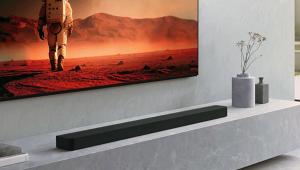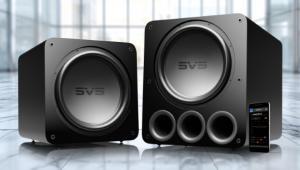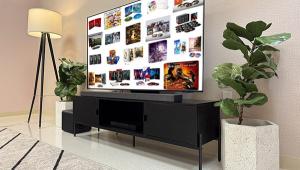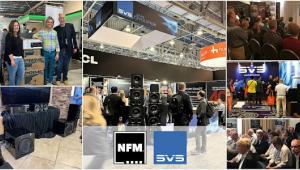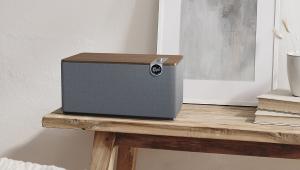What Makes a Good Center Speaker

What’s wrong with horizontally arrayed drivers? When a woofer, for example, crosses over to a tweeter, the two drivers overlap over a limited range of frequencies, since loudspeaker crossover filters don’t generally have near-infinite slopes (though there have been a few attempts at this, with the most widely known and successful coming from Joseph Audio designs using a crossover technique patented by Richard Modaferri). If you’re seated at the same distance from the two overlapping, horizontally positioned drivers there’s usually no problem. But if you move off-center in the same plane as the drivers, the arrival times from them will be different. This will produce cancellations, known as comb filtering, at or near the crossover frequency.
In most multi-way speakers the drivers are aligned top to bottom, so these cancellations occur in the vertical. With proper seating height, this will usually not produce noticeable problems, apart from some sensitivity to your seated ear height (which is usually optimum, though not always, on or near the tweeter axis). But if the drivers are arrayed horizontally, and you move off-center, there will be audible cancellations. And these cancellations will occur not only between the woofers and the tweeter, but between the two woofers as well. The frequency and severity in the latter will depend on the woofers’ spacing. The result in either case can be suck outs of several decibels. With the woofers-to-tweeter crossover frequency typically around 2kHz, this can play havoc with dialogue intelligibility.
Have there been two-way centers that minimize this issue? Yes, but the odds are against it.The most successful center-channel speakers are three-way designs. They will still have two woofers at the left and right, but between them there’s a midrange and tweeter, positioned one above the other. At an appropriate ear height there will then be no audible comb filtering between these upper range drivers. There may still be some cancellations between the two woofers, or between the woofers and the midrange, depending on the driver spacing and the crossover frequency to the midrange (in the latter case, the lower the better). But such center speakers tend to be taller than in two-way designs to make room for the vertically stacked midrange and tweeter.
I can’t emphasize enough that the center channel is not just the “dialogue” channela persistent misconception. The center is, according to some experts, the most important speaker in a surround setup. It carries not only the dialogue but often a heavy dose of music and effects as well. If it can’t handle that, the system as a whole will be compromised, whether the center is a two- or three-way design.
While we’ve tested some three-way center speakers that don’t measure as well as the theory suggests, if well designed they stand a good chance of being better than your average two-way. The best center speaker, of course, is one that’s identical to the main left and right pair. But unless you plan on a projection system with a perforated screen (which has issues of its own relating to picture quality), or like to crane your neck to look up at a non-perf screen, this isn’t practical for most audio-video setups.
But most home theaters are built around a large flat screen display rather than a projection system. In that case, one practical solution to the center channel dilemma is to allow enough height in the shelf under the TV to accommodate a taller than normal three-way center speakersomething to keep in mind when choosing that audio/video hutch. (Placing a speaker in an enclosed shelf can create other audio issues, but that’s a different subject!)
The only challenge will then be in finding a three-way center that matches the left and right speakers reasonably well. And, of course, that fits your budget. Currently a number of manufacturers do offer such models, including Infinity (the Reference Series, shown in the photo here though not yet available as I write), Revel (Concertas), Aperion, SVS, KEF (a special case with its concentric Uni-Q driver handling the midrange/tweeter chores), the just-announced Pioneer Elite SP-EC73 (also with a concentric mid-tweet) and Paradigm. While none of these are cheap, they won’t demand your firstborn as a down payment.





























